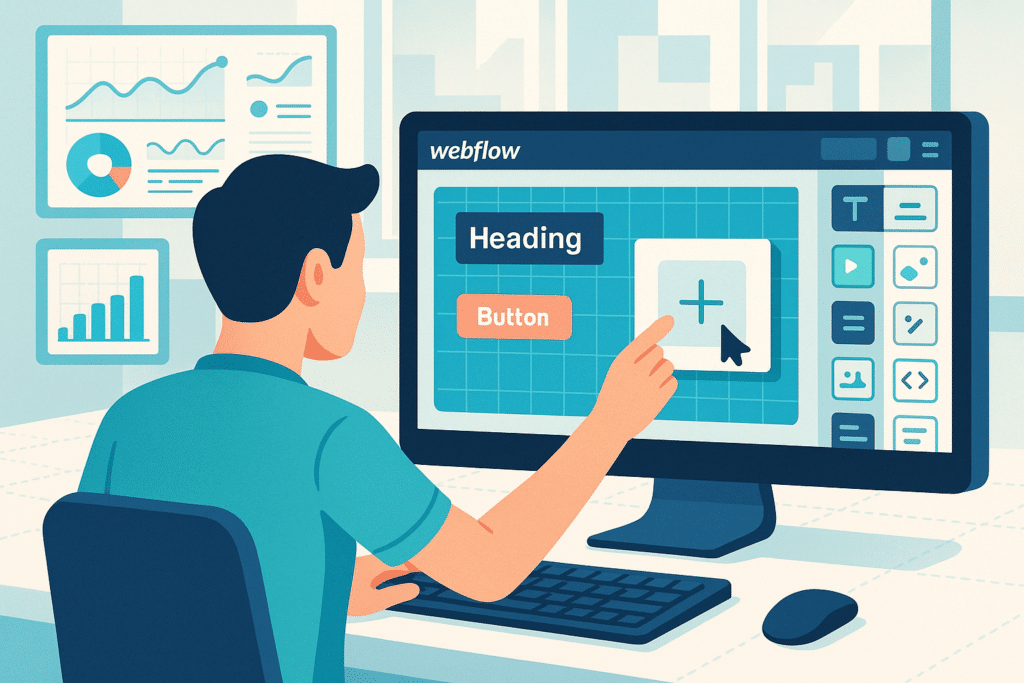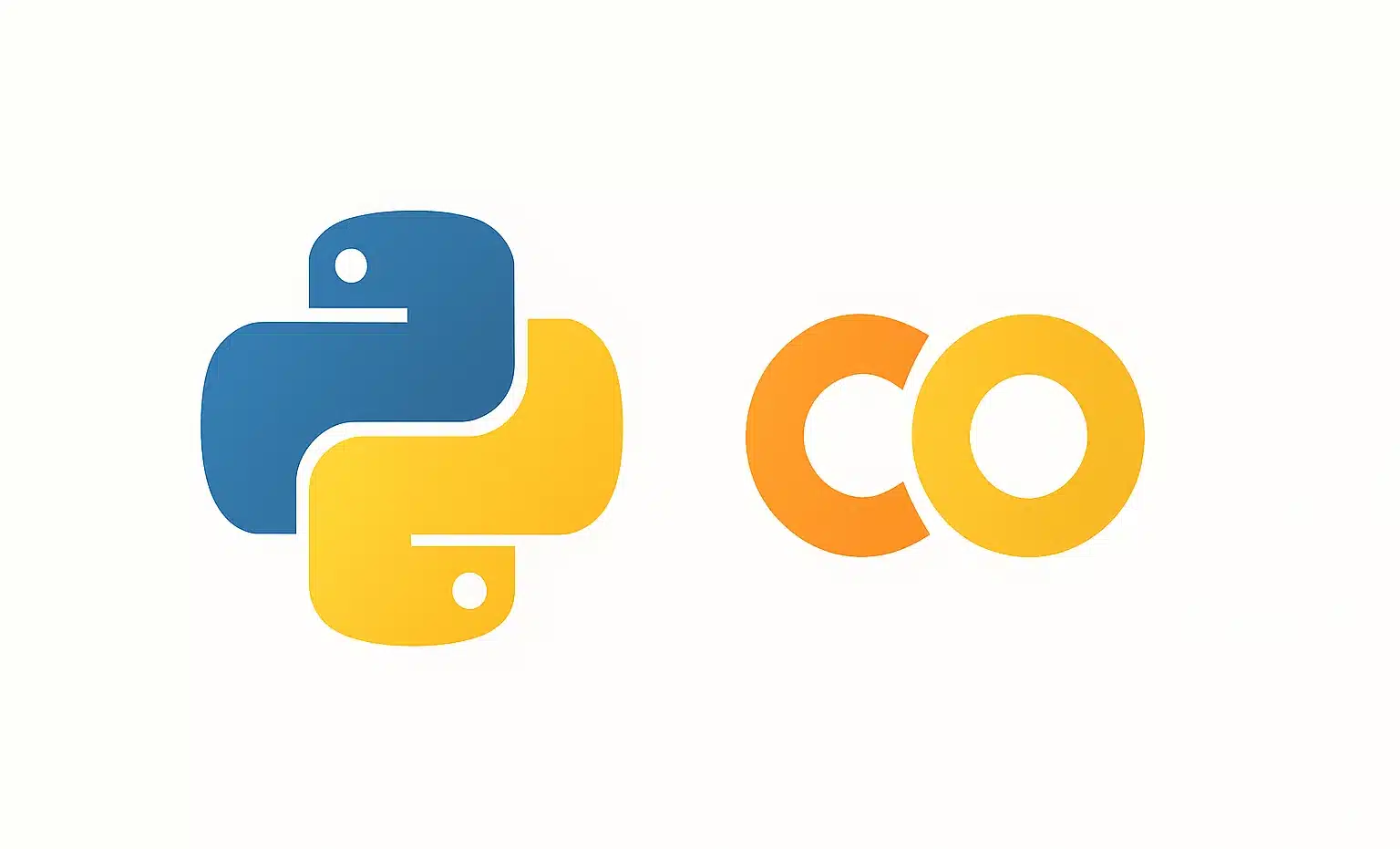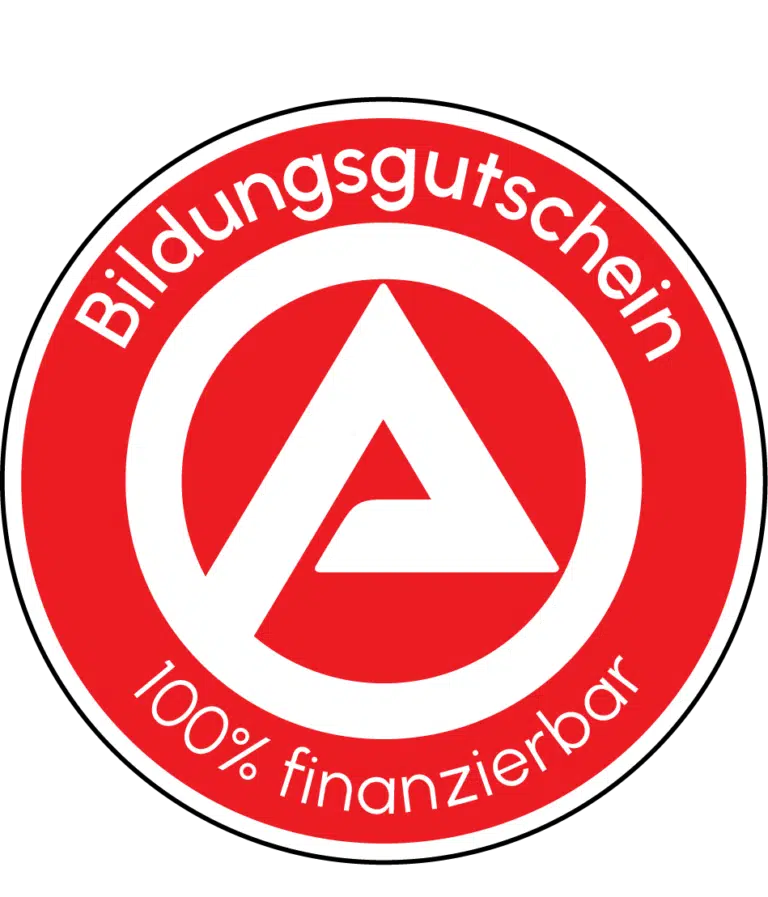Do you want to create a website but lack coding knowledge? Webflow could be the tool you need. With its intuitive interface, it enables you to design, publish, and manage a professional site without needing a developer. In this article, we’ll guide you step by step to understand its advantages, limitations, and how to make the most of it.
What is Webflow and who is it for?
What is no-code?
No-code is an innovative approach that allows you to create applications, sites, or digital tools without writing a single line of code. Thanks to visual interfaces, you can design quickly without needing a developer. This increasingly popular method unleashes your creativity and accelerates project delivery.
Webflow: definition
Webflow is a no-code CMS that enables you to create professional websites without requiring technical skills. It provides a powerful visual editor capable of generating clean code while integrating advanced features such as a dynamic CMS or e-commerce.
Who is Webflow for? Developers, marketers, designers?
- Designers: Easily transform your Figma mockups into functional sites.
- Developers: Speed up prototyping and focus on complex tasks.
- Marketers: Create effective and optimized SEO landing pages without coding.

Why use Webflow?
A modern CMS that frees you from technical constraints
Webflow allows you to design and publish a site without a server, without plugins, and without maintenance. You can focus on what matters: aesthetics, user experience, and performance.
An agile alternative to WordPress and Framer
Webflow is appealing for its flexibility, smooth interface, and visual logic. Unlike WordPress, there are no plugins to manage. Compared to Framer, Webflow offers an integrated CMS and better SEO customization.
Webflow vs WordPress: What are the concrete differences?
| Criteria | Webflow | WordPress |
|---|---|---|
| Installation | None required, everything is online | Manual hosting and setup |
| Customization | Live visual, responsive design | Theme and plugin-based |
| Maintenance | Automatic and built-in | Manual, with frequent updates |
| SEO | Native tags, sitemap, compression | Depends on plugins like Yoast |
Key features of Webflow
Drag and drop visual design
Integrated CMS: Dynamic content without coding
The Webflow CMS lets you structure, manage, and publish dynamic content such as a blog, gallery, or testimonials. You define your own content types, much like in a database, without being limited to preset templates.
Fast and secure hosting
Webflow hosting leverages a global CDN, automatic SSL certificates, and continuous backups. You benefit from optimal loading speeds, without dealing with technical aspects.
Webflow e-commerce: Sell with style
Create your online store directly in Webflow. Manage products, orders, deliveries, and payments through a unified interface. The customer experience remains elegant, seamless, and 100% responsive.

How to use Webflow step by step?
Understand the interface: Panel, templates, elements
| Interface Area | Function |
|---|---|
| Elements Panel | Insert sections, headings, images, etc. |
| Navigation Panel | Organize pages and site structure |
| Style Panel | Adjust colors, spacing, typography, and more |
Launching your first project: Tips and pitfalls to avoid
- Plan your structure from the start.
- Use a template if you’re new, it will save you time.
- Test each page on mobile, tablet, and computer.
- Don’t ignore SEO: Customize your tags, add a favicon, compress your images.
- Publish gradually to correct errors as you go.
Webflow University: Learn quickly and well
Webflow offers its own free training platform, featuring clear tutorials and short videos. You learn at your own pace, according to your needs. It’s ideal if you’re just starting out or wanting to upskill quickly.

How much does Webflow cost?
| Plan | Price (USD/month) | Key Features |
|---|---|---|
| Free | 0 | 1 project, Webflow subdomain, limited features |
| Site Basic | 14 | Custom domain, 500 form submissions |
| CMS | 23 | Dynamic collections, CMS API, 2000 items |
| Business | 39 | More bandwidth, priority support |
Downloading Webflow: Is it possible?
You cannot download Webflow in the traditional sense. The tool operates entirely online from your browser. There is no official desktop application. Everything happens in the cloud, saving you from installing anything. However, if you wish to export your HTML, CSS, and JavaScript code, it’s possible, but only with a paid plan. This allows you to use your files elsewhere, although the CMS interactivity remains exclusive to Webflow. If you’re looking for software to install, this isn’t the tool for you. But if you’re aiming for simplicity, accessibility, and autonomy, its online nature is a real advantage.
Webflow vs Figma: Design or publication?
Webflow and Figma serve different purposes, but complement each other well. Figma is a design tool, intended for creating mockups, testing interfaces, and collaborating with teams. It stops at the visual stage, allowing you to design, but not publish anything. Webflow, on the other hand, goes further. You build the site from scratch or from a mockup, then put it online. It combines design, development, and hosting in one environment, allowing you to move from prototype to final version without coding or changing tools. So if you want to create, stick with Figma. If you want to publish and rank, choose Webflow.
Conclusion
Webflow is emerging as a crucial solution for creating modern websites without the technical effort. Whether you’re a designer, developer, or marketer, its no-code approach provides a rare freedom of creation without sacrificing performance. With its integrated CMS, fast hosting, and innate SEO tools, you are autonomous from start to finish. If you’re seeking a seamless alternative to WordPress, focused on design and efficiency, Webflow deserves your full attention.










